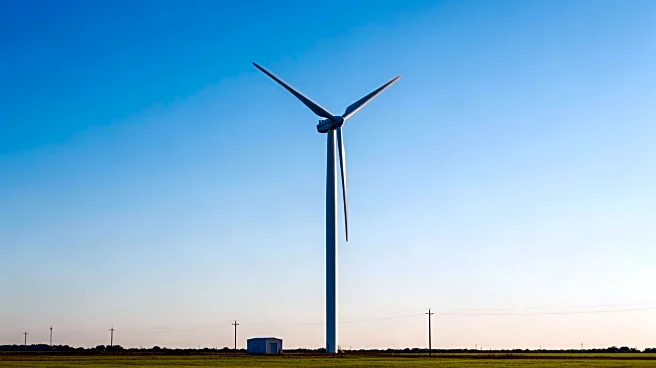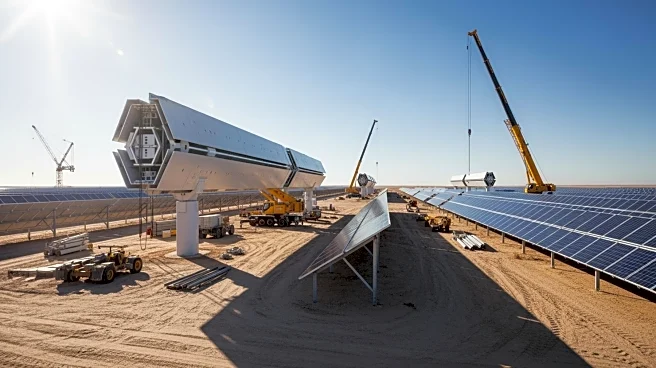What's Happening?
U.S. electric utilities are poised to enter a significant investment phase, described as a 'super cycle,' to expand transmission and generation networks. This development is driven by increasing demand
from data centers, according to a report by Morningstar DBRS. The projected investment in electricity infrastructure is expected to reach $1.4 trillion from 2025 to 2030, doubling the amount invested in the previous decade. The North American Electric Reliability Corp. anticipates load growth to rise from 6.1% to 11.6% over the next ten years. The surge in demand presents opportunities for utilities but also necessitates structural changes and regulatory support. States like California, Texas, and Louisiana may face elevated risks of resource inadequacy, potentially leading to electricity shortfalls.
Why It's Important?
The anticipated investment surge in the U.S. electric utility sector is crucial for meeting the growing energy demands of data centers, which are becoming increasingly integral to the digital economy. This investment is expected to enhance grid reliability and support the transition to renewable energy sources. However, the reliance on private capital to fill funding gaps and the potential for increased costs to ratepayers highlight the need for careful regulatory oversight. The expansion of data centers could lead to a cycle of increased revenue for utilities, but it also poses challenges in forecasting future power demand accurately.
What's Next?
Utilities with supportive regulatory environments and access to capital markets are likely to benefit from the data center boom. However, the industry must navigate uncertainties around data center capacity and the associated demand surges. The need for massive utility investment may lead to increased collaboration with private capital sources. Regulatory bodies will play a critical role in ensuring that the expansion of electricity infrastructure aligns with public interest and sustainability goals.













